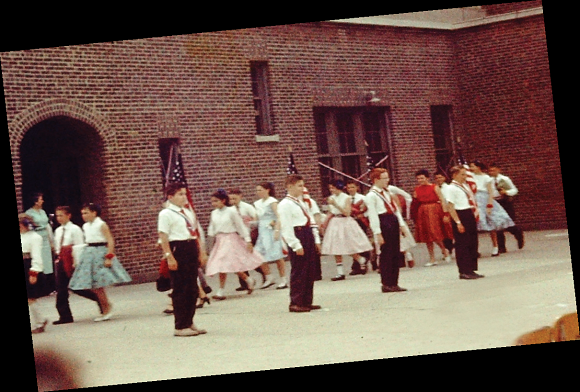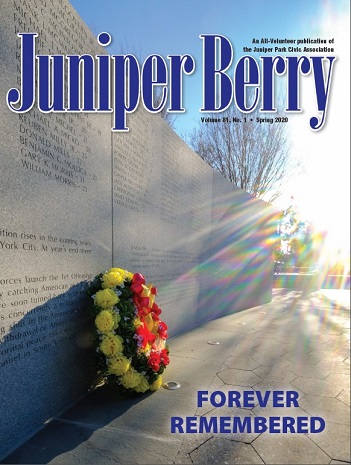I started first grade at PS102 on Van Horn St. in Elmhurst in 1955. My father was disappointed that I wasn’t going to his Alma Mater, PS72 in Maspeth, but that year school district lines were changed. The main school building hasn’t changed much but the schoolyard used to have a large cemented area and a natural area with many large trees. Today there is another building in that area larger than the original building to accommodate the rising population in Elmhurst.
The school bus stop was on Mazeau Street where it picked us up and brought us home. When my friends and I got older we walked to and from school; it was only a 15-minute walk unless we fooled around in one of the many vacant lots along the way. On the way home we might stop at Crowley Park which had recently been built. My friends and I all loved to play ball, any kind – punchball, slapball, boxball, handball, Chinese handball, basketball, football, hardball or softball. A couple of times we would play on the LIRR tracks and one boy from my class touched the third rail and was badly burned and missed the rest of the school year but survived.
The school had kindergarten half day classes and grades 1-6. There were two classes for each grade and about 40 kids in a class. Teachers I remember were Mrs. Schneck, Mrs. Harris, Mrs. Kailen, Mrs. Mulhearn and Mrs. Carmen. All the teachers in school were women. We were taught our ABC’s and reading with the Dick and Jane books and I can remember learning to count with beans from a large jar in first grade. In first grade there was a milk and cookie break and afterward you could put your head on the desk and close your eyes.
Classes consisted of math, science, social studies and history as well as writing stories and poetry. We learned songs, too, and to this day when a fly is bugging me, I think of the Shoo Fly Song. Recently I learned the original song was considered racist, but we sang a different version of the song. Mrs. Harris taught us the song Cockles and Mussels, a traditional Irish song. She taught fifth grade and was the only black teacher in the school.
Most kids obeyed the teacher and discipline usually consisted of making a kid stand facing the wall in the back of the class or making them write I shall not (blank blank) something 100 times. I never saw a student hit a teacher or a teacher hit a student. Many of my friends attended Saint Adalbert and I heard the Nuns didn’t put up with misbehavior.
A student could be a monitor for the teacher to deliver a message. The teacher picked a tall kid to use the pole to open and close the windows or to erase and wash the blackboard. In the 6th grade students could volunteer to be a crossing guard and wear a white band with a badge and direct school crossings. I don’t know if there were adult crossing guards too in those days.
Each day we said the Pledge of Allegiance and some kids could leave the room for religious reasons. Also, one day a week some kids left class for religious instruction. In the 1950s it was the height of the Cold War and we had Duck and Cover drills where we got under our desks in case of a nuclear attack and we could at least have some protection from flying glass.
The kids who brought their lunch, of which I was one, ate in the auditorium. On nice days we could go in the schoolyard and play. Girls usually played jump rope and recited long verses and hopscotch was a favorite too. Boys were mostly a little wilder running around and rough housing. I broke my glasses more than once and that didn’t make my parents happy. We were all fans of wrestling and would do the sleeper hold on each other until we passed out for an instant. Thinking back, that was pretty dangerous.
One day a week we had Assembly in the auditorium Boys would dress with a white shirt, red tie and blue pants. Girls the same but they wore skirts. During Assembly the Principal might speak and a film might be shown, or we would hear some important information from a policeman or a fireman with a safety message. Also, school plays were performed, along with singing and poetry readings and spelling bees.
Each year there was also the Talent Show and we got to see what talents our classmate had. Tap dancing and accordion playing were pretty popular back then and I remember two sisters with good voices who always sang Que Sera, Sera (whatever will be, will be) a big hit for Doris Day in 1956.
Each Spring there was a Plant Sale and a good time to buy a plant for mom for Mothers’ Day. Also in May was the Spring Festival, where each grade would perform a dance for the parents in the schoolyard. The May Pole Dance was fun.
Also, each grade had competitions on Field Day, held in Victory Field in Forest Park where we had races and other athletic events. One year, I won in broad jumping and softball throwing for distance.
In the 6th grade the boys and girls project would be to make an apron. We had to buy the material and sew it and the apron was needed for shop classes in Junior High School 73. The boys would get metal, wood, electric and printing shop and the girls had home economics learning how to cook, bake and sew. I understand the shop classes are discontinued which is a shame, we’ll always need people who can work with their hands.
I still like to walk past the old school from time to time and think of the fond memories I had there a long time ago. I even went inside to have a look around after checking with the security guards and it still looks like a good school. I’m sure the challenges are greater today than when I went. Then all the children were white and spoke English; today Elmhurst is considered the most ethnically diverse neighborhood with a large immigrant population. One thing that hasn’t changed is that the kids still look like they are enjoying being there and getting a good education.




